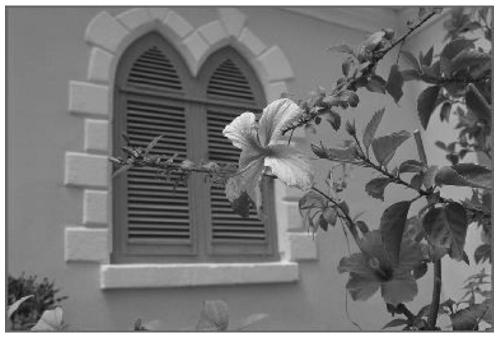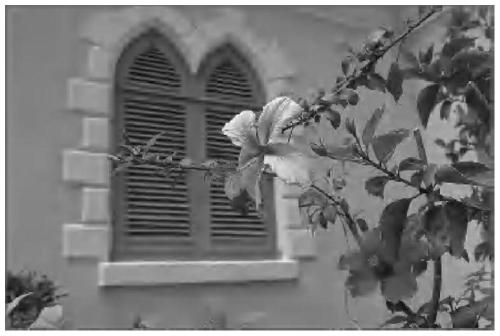A Color Image Compression Method Based on Reaction-Diffusion Equations
A diffusion equation, color image technology, applied in the field of image processing, can solve the problem of color information prone to block effect, etc., achieve rich details, improve PSNR value and SSIM value, detail and meticulous effect
- Summary
- Abstract
- Description
- Claims
- Application Information
AI Technical Summary
Problems solved by technology
Method used
Image
Examples
Embodiment 1
[0044] This embodiment proposes a color image processing method based on reaction-diffusion equations, the color image processing method first converts the color image into a grayscale image in the compression stage, and uses the JPEG compression method to compress the grayscale image , and then use the local optimal strategy to select some representative pixels in the color image, and then only store the compressed grayscale image and the selected representative pixels to achieve the purpose of compression; in the decompression stage, use the reaction-diffusion equations to The stored data is decompressed into a raw color image.
[0045] The color image compression method based on the reaction-diffusion equations proposed in this embodiment is different from improving the JPEG compression method itself in the improvement process of the traditional JPEG compression method, but chooses to perform early image optimization processing on the image to be compressed by the JPEG compr...
Embodiment 2
[0047] Embodiment 2 is a further limitation to the color image compression method based on reaction-diffusion equations described in embodiment 1, and the specific steps of the color image compression process in the color image compression method based on reaction-diffusion equations are:
[0048] Step 1: Convert the original color image to u 0 Divided into a series of small images u of 8*8 pixels i , where i=1, 2, 3...;
[0049] Step two: at u i traversing all 64 pixels, using this pixel as a representative pixel to repair the small image u described in step 1 by using reaction-diffusion equations i ;
[0050] Step 3: Calculate the repaired small image u in the 64 situations described in Step 2 i PSNR value;
[0051] Step 4: Obtain the small image u described in Step 3 i The representative pixel point x in i and the representative pixel point x i Corresponding PSNR value: PSNR i , where represents pixel x i is the pixel corresponding to the PSNR value with the highe...
Embodiment 3
[0062] Embodiment 3 is a further limitation of the color image processing method based on reaction-diffusion equations in embodiment 2. The specific number of a series of small images of 8*8 pixels in step 1 is M*N / 64, where M and N Respectively represent the number of pixels in the length and width of the original color image. If M and N are not multiples of 8, it is necessary to symmetrically extend the length and width of the original color image to multiples of 8.
[0063] Dividing the original color picture into multiple small images of 8*8 pixels can greatly reduce the calculation time of the algorithm to solve the representative pixel points, thereby reducing the time for the proposed model compression and decompression.
PUM
 Login to View More
Login to View More Abstract
Description
Claims
Application Information
 Login to View More
Login to View More - R&D
- Intellectual Property
- Life Sciences
- Materials
- Tech Scout
- Unparalleled Data Quality
- Higher Quality Content
- 60% Fewer Hallucinations
Browse by: Latest US Patents, China's latest patents, Technical Efficacy Thesaurus, Application Domain, Technology Topic, Popular Technical Reports.
© 2025 PatSnap. All rights reserved.Legal|Privacy policy|Modern Slavery Act Transparency Statement|Sitemap|About US| Contact US: help@patsnap.com



